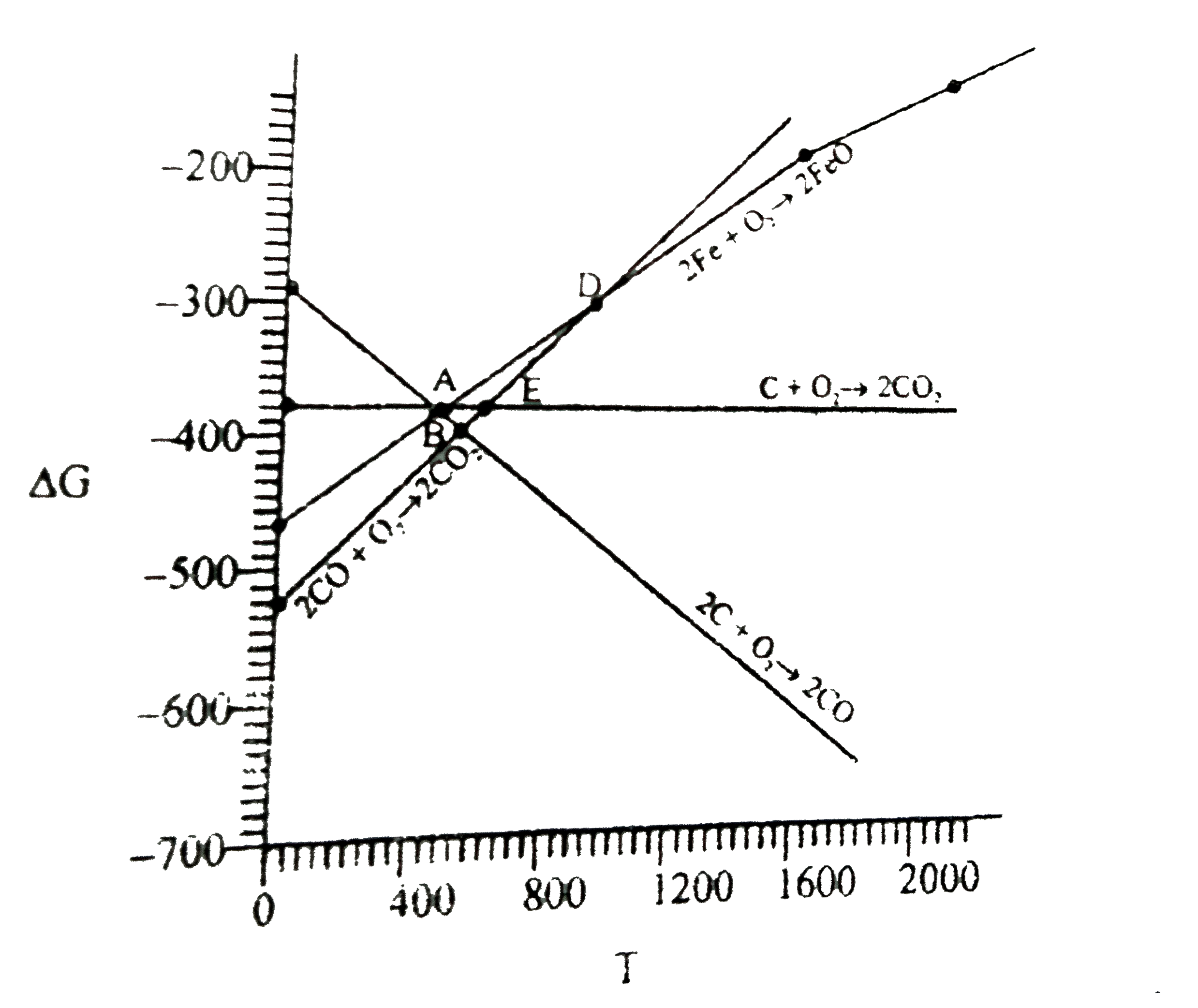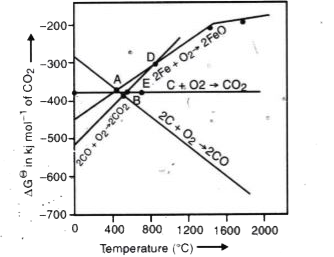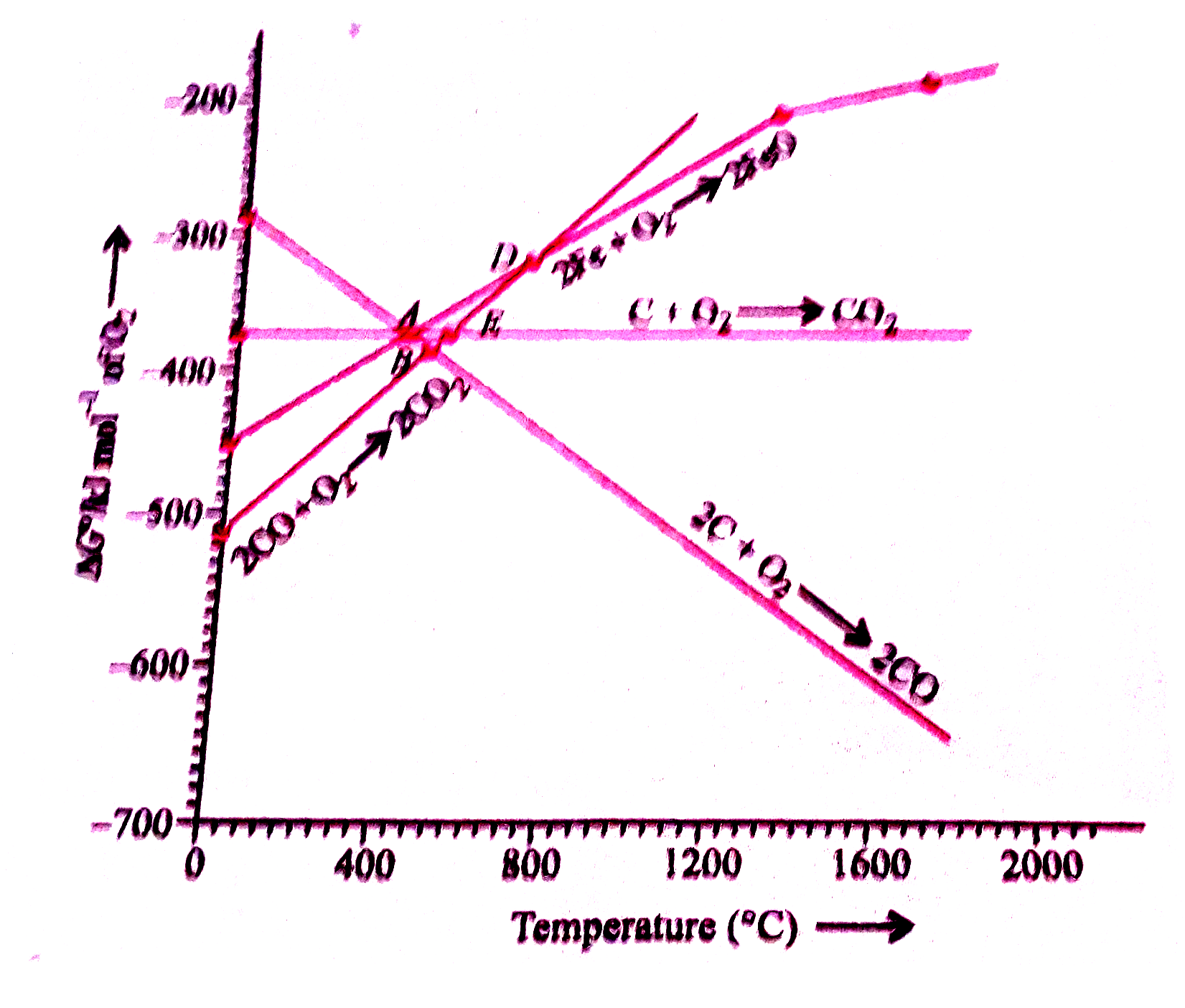Choose the correct option of temperature at which carbon reduced FeO to iron and produces CO

A
Below temperature at point A
B
Approximately at the temperature corresponding to point A
C
Above temperature at point A but below temperature at point D
D
Above temperature at point A
Video Solution
Text Solution
The correct Answer is:D
(d) In the figure shown above point A
ΔrG∘C,CO<ΔfG∘FeFeO
Therefore, above point A , C reduces FeO to Fe forming carbon monoxide Hence, reduction of FeO by carbon occurs above point A only.
|
Updated on:21/07/2023
Topper's Solved these Questions
- BOOK - NCERT EXEMPLAR ENGLISHCHAPTER - GENERAL PRINCIPLE AND PROCESSES OF ISOLATION OF ELEMENTS EXERCISE - Short answer type Question18videos
GENERAL PRINCIPLE AND PROCESSES OF ISOLATION OF ELEMENTS
- BOOK - NCERT EXEMPLAR ENGLISHCHAPTER - GENERAL PRINCIPLE AND PROCESSES OF ISOLATION OF ELEMENTS EXERCISE - Matching The columns5videos
GENERAL PRINCIPLE AND PROCESSES OF ISOLATION OF ELEMENTS
- BOOK - NCERT EXEMPLAR ENGLISHCHAPTER - ELECTROCHEMISTRYEXERCISE - All Questions67videos
ELECTROCHEMISTRY
- BOOK - NCERT EXEMPLAR ENGLISHCHAPTER - HALOALKANES AND HALOARENESEXERCISE - Long Answer Type Questions3videos
HALOALKANES AND HALOARENES
Similar Questions
Knowledge Check
- Question 1 - Select One

Choose the correct option of temperature at which carbon reduces FeO to iron and produces CO.ABelow temperature at point A.BApproximately at the temperature corresponding to point A.CAbove temperature at point A but below temperature at point D.DAbove temperature at point A. - Question 2 - Select One

Choose the correct option of temperature at which carbon reduces FeO to iron and produces CO.ABelow temperature at point A.BApproximately at the temperature corresponding to point A.CAbove temperature at point A but below temperature at point D.DAbove temperature at point A. - Question 3 - Select One

Choose the correct option of temperature at which carbon reduces FeO to iron and produces CO.ABelow temperature at point A.BApproximately at the temperature corresponding to point A.CAbove temperature at point A but below temperature at point D.DAbove temperature at point A.


